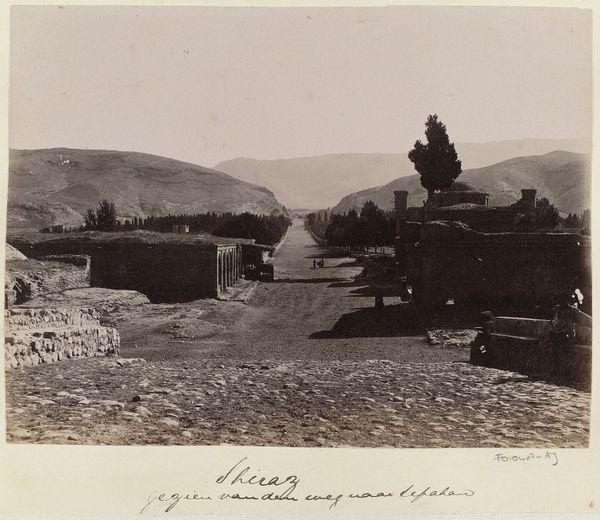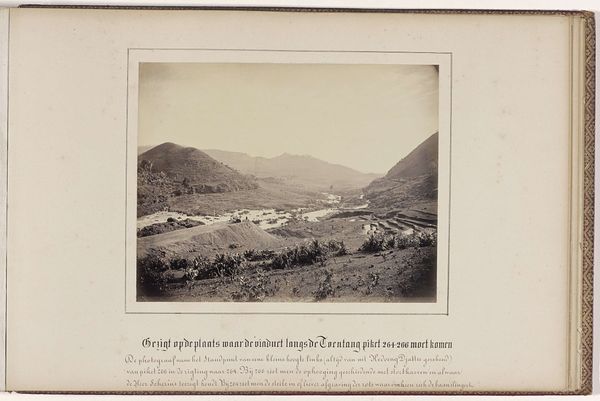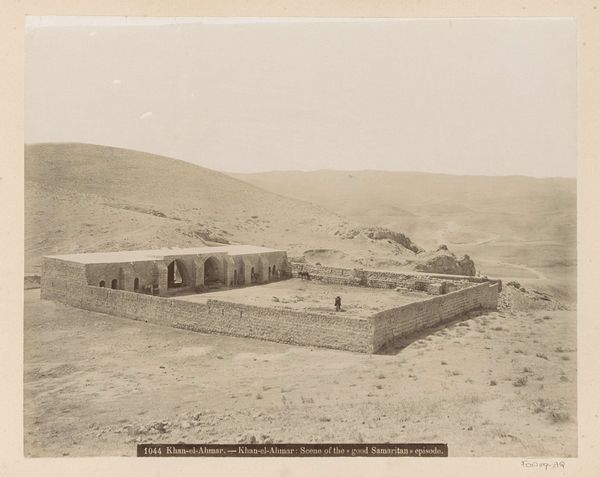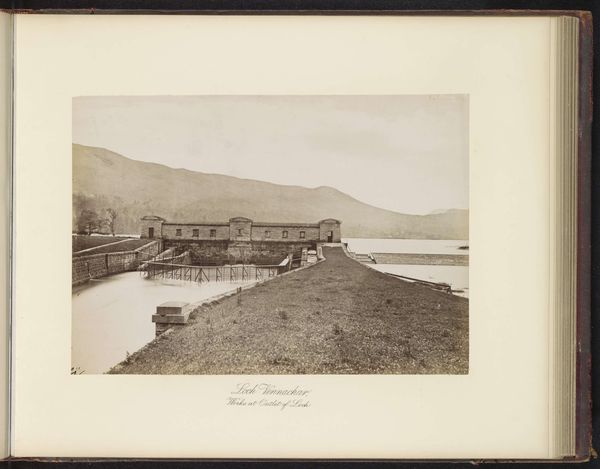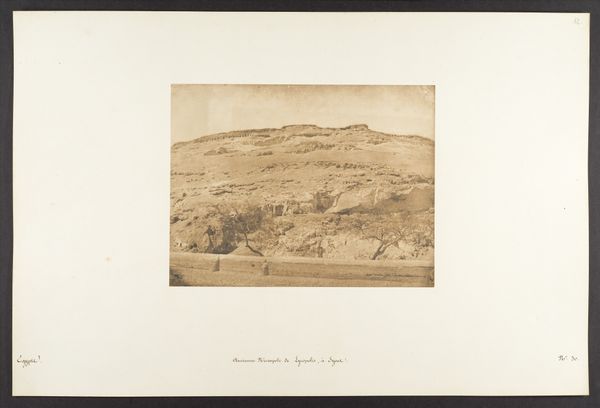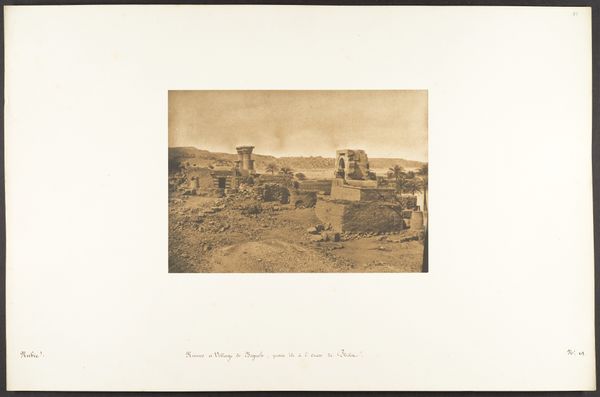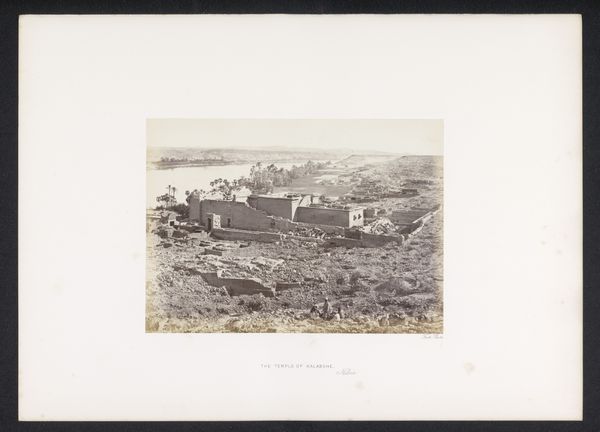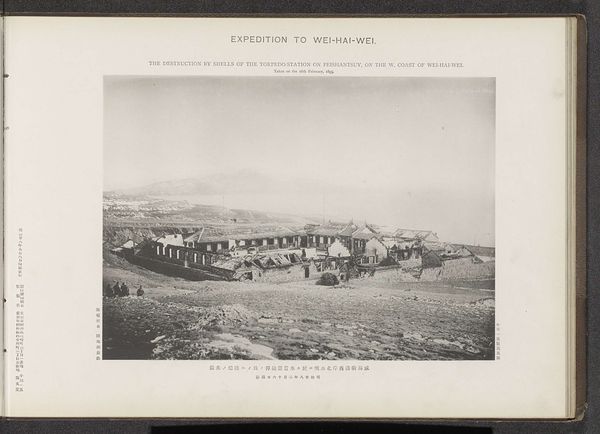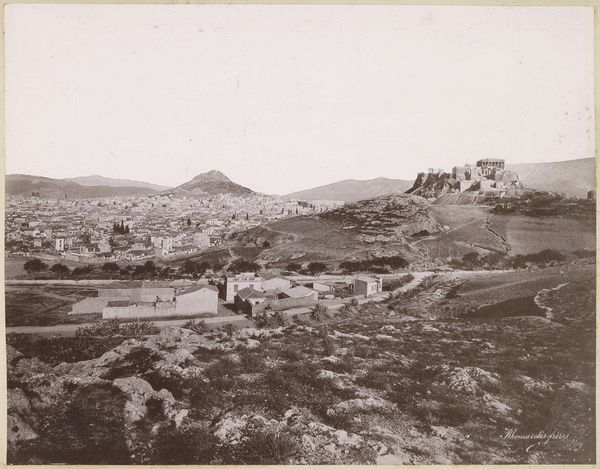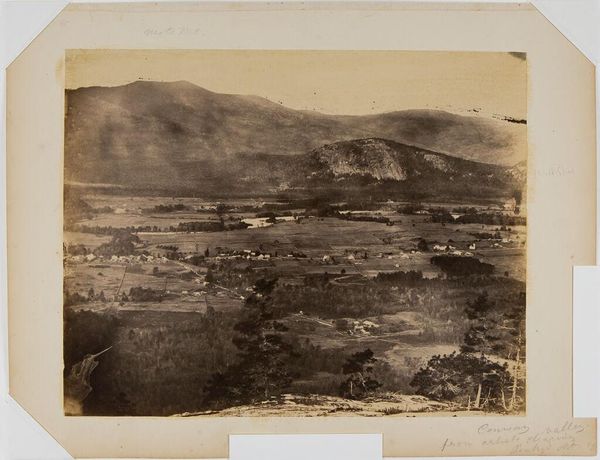
Exterieur van tweede Britse telegraafpost in Juna op 427 meter hoogte 1903 - 1906
0:00
0:00
photography, gelatin-silver-print
#
landscape
#
photography
#
coloured pencil
#
gelatin-silver-print
#
history-painting
Dimensions: height 80 mm, width 137 mm
Copyright: Rijks Museum: Open Domain
Editor: This gelatin silver print, titled "Exterior of the second British telegraph post in Juna at 427 meters altitude," was created sometime between 1903 and 1906 by D.T. Dalton. The image possesses this almost documentary feel, like it wants to freeze a specific moment in time. What do you make of this piece? Curator: Well, that “documentary feel” is critical. We need to consider the context: This image exists within a larger history of British colonialism. It's not simply a landscape, but a deliberate insertion of British infrastructure into a foreign space, a space and place relationship fraught with issues of power and cultural imposition. This photograph is more than a record; it's a statement about British influence, wouldn't you say? Editor: Yes, I hadn't considered that. So, the telegraph pole becomes a symbol of colonial reach and control? Curator: Precisely. It highlights how technology was employed to assert dominance, shrinking distances and facilitating control. Also, consider what's not being shown: the perspective of the local population and their reaction to this imposition. How do you think that absence shapes our reading of the image? Editor: It almost silences them, emphasizing the British perspective and erasing the local narrative. It raises some difficult questions about who gets to control the narrative in historical documentation. I didn’t expect so much complexity from what initially seemed to me like a very straightforward image. Curator: Exactly! Art often functions as a battleground for competing ideologies. Recognizing the power dynamics inherent in visual representation is the first step to deconstructing those historical imbalances. Editor: Thanks, that’s really insightful! Now I'm wondering about the stories this picture *doesn’t* tell and how photography can be more actively used as a tool for inclusive narratives.
Comments
No comments
Be the first to comment and join the conversation on the ultimate creative platform.
